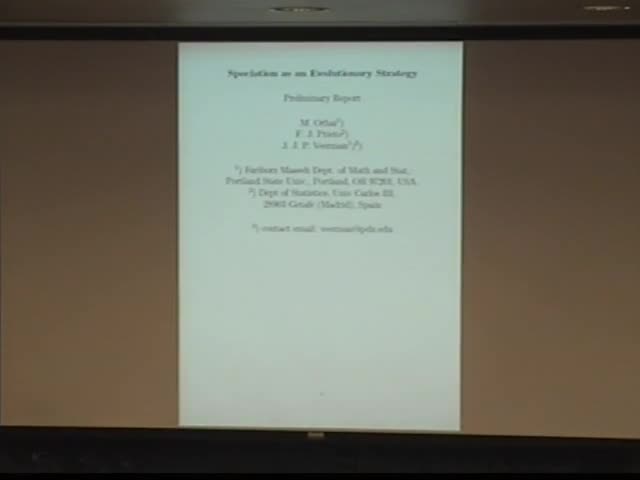Speciation as an Evolutionary Strategy
Presenter
September 5, 2012
Keywords:
- Evolution
MSC:
- 37L05
Abstract
We consider a class of models that generalizes the Bak Sneppen model
that can be used to study evolution.
Agents with random fitnesses are located at the vertices of a graph $G$.
At every time-step the agent with the worst fitness emph{and its neighbors on $G$} are
replaced by new agents with random fitnesses.
By using Order Statistics
and Dynamical Systems, we succeeded in solving a number of questions
about how the distribution of the fitnesses evolves under this process.
In particular we can prove that for the models that describe in-species evolution, all initial
conditions converge to a (not necessarily unique) discrete measure.
In contrast for models that describe speciation,
every initial probability measure will converge to a (unique) absolutely continuous measure.
The conclusion is that
in-species evolution can optimize fitness but all agents tend to become
identical (no diversity). Speciation on the other hand also improves
fitness a little less dramatically, but diversity is retained:
a range of fitnesses is preserved.
This is a preliminary report of research in progress.
Joint work with F. J. Prieto(Univ Carlos III, Madrid, Spain) and M. Orhai
(Portland State University).
